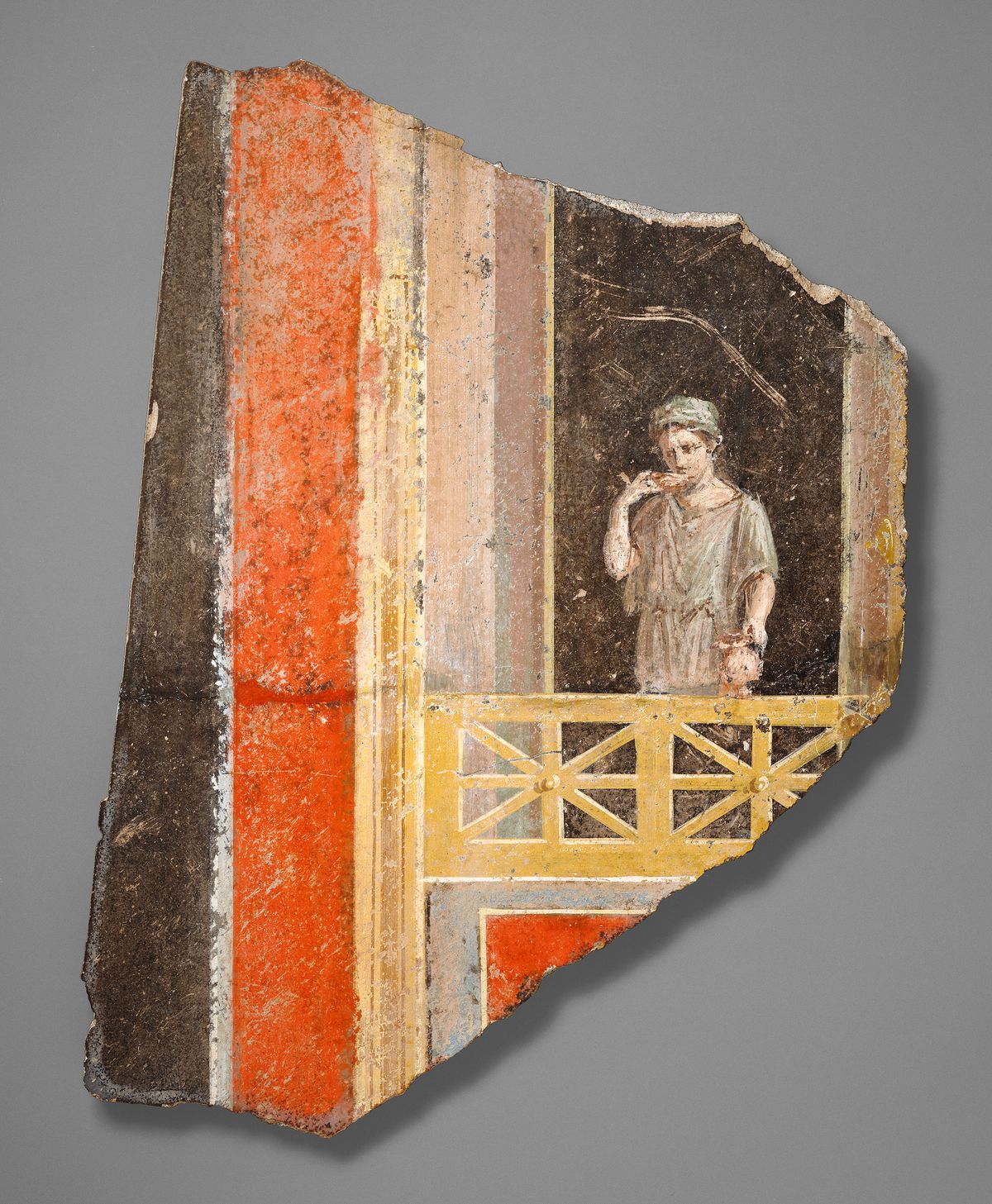A fresco fragment in the collection of Los Angeles’s J. Paul Getty Museum was previously in the inventory of a dealer known to traffic in stolen artefacts and should be returned to Italy, according to findings by forensic archaeologist Christos Tsirogiannis.
The Denmark-based researcher discovered evidence, first made public in an article he published in the Journal of Art Crime in 2019, that the colourful mural fragment—in which a female figure in a tunic stands on a balcony sipping from a cup and balancing a jug on the railing—appears in a photograph from the archive of Robert Hecht, a dealer who faced accusations of selling stolen antiquities. The photograph was among materials police seized from Hecht during a 2001 raid in Paris. He died in 2012.
The mosaic fragment, which is currently on view at the Getty Villa, the institution’s outpost in Pacific Palisades, entered the Getty’s collection in 1996 via a donation from the collectors Barbara and Lawrence Fleischman. Information on the Getty’s digital collection listing for the object dates it to between 10BC-AD14, noting that it is in keeping with the second style of Roman wall painting, which flourished in the first century.
The collection entry, which includes Tsirogiannis’s article in its bibliography, lists as the only provenance prior to the Fleischmans the gallery of Swiss dealer Fritz Buerki, from which they bought the object in 1987. Buerki was a close associate of Hecht’s whose activities came under scrutiny multiple times beginning in the 1970s. Buerki and Hecht’s dealings were examined during the decades-long investigation into the origins of the Euphronios krater, which the Metropolitan Museum ultimately repatriated to Italy more than 35 years after its acquisition. It was during a Carabinieri raid of Hecht’s Paris apartment as part of that investigation that the photograph of the fresco fragment cited in Tsirogiannis’s article was seized.
Hecht was indicted in Italy in 2005, along with former Getty antiquities curator Marion True, for allegedly conspiring to traffic in illegal antiquities. Their dramatic trial ended without judgment in 2010.
As Tsirogiannis’s article notes, the Getty has already repatriated one object from the Fleischman gift that the couple had acquired from Buerki, another fresco that depicted a mask of Hercules. That artefact was found to have been illegally excavated from a villa near Vesuvius and the archaeological site of Pompeii. Tsirogiannis suspects the “Woman on a Balcony” fragment may also have come from Pompeii and has shaed his findings with the New York District Attorney’s Office.
The photographic evidence seized from Hecht’s apartment, Tsirogiannis wrote in his article, “combined with revelation of the involvement of the most notorious antiquities dealer and the repetition of a pattern that he used with his accomplices makes clear the real status of this artefact”.
As press time, the Getty had not responded to a request for comment. In a statement given to The Guardian, a spokesperson for the institution said, "Getty continually researches the background and provenance of items within its collection and considers new evidence when it is presented. We have a longstanding policy of returning objects to their country of origin or discovery when the research indicates it is warranted."


